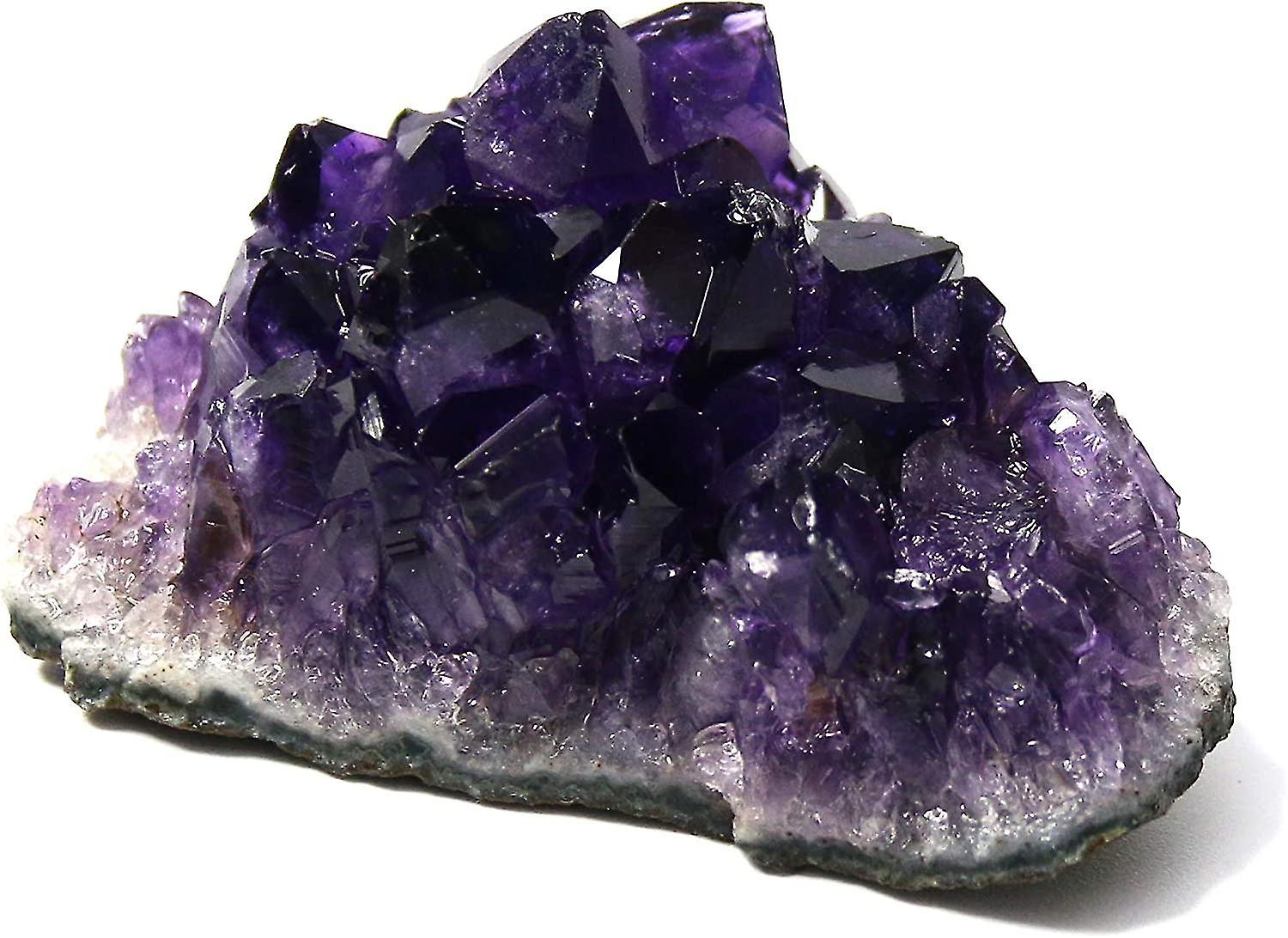Unveiling the Journey of Amethyst Gemstones from Mine to Market: Wigmore Trading’s Trusted Supply Chain
Unveiling the Journey of Amethyst Gemstones from Mine to Market: Wigmore Trading’s Trusted Supply Chain
Welcome to the captivating world of Amethyst gemstones, where dazzling purple hues meet ancient geological wonders. Have you ever wondered about the enchanting journey these precious gems embark on, from deep within the earth’s crust to adorning our jewelry boxes? Look no further as we unveil the incredible story behind Amethyst gemstones – and today, we shine a spotlight on Wigmore Trading’s trusted supply chain. Get ready to be mesmerized by tales of mining expeditions, expert craftsmanship, and meticulous quality control that ensure these exquisite stones find their way into your hands. Join us as we delve into this extraordinary voyage and discover how Wigmore Trading has become synonymous with unrivaled excellence in the world of amethysts!
Introduction to Amethyst Gemstones and their popularity in the market
Introduction to Amethyst Gemstones:
Amethyst gemstones are one of the most popular and highly sought-after gemstones in the market. Known for their stunning purple hues, these beautiful gems have been prized and admired for centuries. Amethysts are a variety of quartz that range in color from pale lilac to deep violet. The name “amethyst” comes from the Greek word “amethustos,” which means “not intoxicated.” This stone was believed to ward off drunkenness and has been associated with sobriety and clarity of mind.
Popularity in the Market:
The popularity of amethyst gemstones can be traced back to ancient civilizations such as the Greeks, Romans, and Egyptians. They were considered a precious stone fit for royalty and were often used in jewelry, crowns, and other ornaments. In fact, many historical figures such as Cleopatra and Catherine the Great were known to adorn themselves with amethysts.
Today, amethyst gemstones continue to hold a special place in the hearts of people all around the world. Their rich history, captivating beauty, and alleged healing properties make them a highly desirable gemstone in the market. From high-end jewelry brands to spiritual healers, amethysts are favored by many for their versatility and allure.
The journey of Amethyst Gemstones from mine to market: step by step process
The journey of Amethyst Gemstones from mine to market is a complex and intricate process that involves multiple steps and stages. In this section, we will take you through the step by step process of how these beautiful gemstones make their way from the mines to your hands.
Step 1: Mining
The first step in the journey of Amethyst gemstones is mining. These purple-hued crystals are primarily found in volcanic rocks, geodes, or as secondary deposits in alluvial sands and gravels. The mining process varies depending on the location and type of deposit, but it usually involves digging deep into the earth’s surface to extract the raw amethyst crystals.
Step 2: Sorting and Grading
Once the raw amethyst crystals are extracted from the mines, they are sorted based on quality and size. This is an essential step as it determines the value of each crystal. Gemologists carefully inspect each crystal for any imperfections such as cracks or inclusions that may affect its overall appearance and value. The crystals are then graded according to their color intensity, clarity, cut, and carat weight.
– Mining and sourcing of Amethyst
Amethyst is a popular and highly sought-after gemstone known for its stunning purple hue and spiritual properties. However, many may not be aware of the journey that this precious stone takes before it reaches the market. In this section, we will delve into the mining and sourcing process of amethyst gemstones, giving you an insight into the fascinating world of amethyst production.
Mining Amethyst:
The first step in the journey of an amethyst gemstone is its extraction from the earth’s crust through mining. Amethyst is commonly found in igneous rocks such as granite and basalt, as well as sedimentary rocks like limestone and shale. These formations are usually found in geologically active regions such as Brazil, Zambia, Uruguay, and Madagascar.
The mining process begins with identifying potential sites through geological surveys to determine where the highest concentration of amethyst can be found. Once a suitable site has been identified, open-pit or underground mining techniques are used to extract the amethyst crystals. Open-pit mining involves digging large pits into the ground using heavy machinery to reach deeper deposits of amethyst. On the other hand, underground mining involves tunnelling deep into the earth to access amethyst veins.
– Processing and cutting of Amethyst
Amethyst gemstones are prized for their stunning purple hues and have been valued throughout history for their beauty and perceived healing properties. However, before they reach the market, amethysts go through a complex journey that includes processing and cutting to bring out their full potential.
The first step in the processing of amethyst is mining. Amethyst is typically found in quartz veins within igneous rocks or geodes. These formations can be found all over the world, with major sources including Brazil, Uruguay, Zambia, and Russia. The mining process involves extracting the amethyst-containing rocks or geodes from the earth’s surface using heavy machinery.
Once extracted, the rough amethyst crystals are sorted based on color, size, clarity, and other factors. This step is crucial as it determines which pieces will be used for jewelry-making and which will be sold as raw specimens to collectors.
After sorting, the rough amethyst crystals undergo cleaning to remove any dirt or debris that may have accumulated during the mining process. This is usually done using water jets or ultrasonic cleaners.
Next comes cutting and shaping of the rough crystals into faceted gemstones or cabochons (smooth polished stones). Cutting is a highly skilled process that requires precision and expertise to reveal the true beauty of each individual crystal. At Wigmore Trading, we work with skilled lapidaries who use traditional techniques along with modern technology to cut each amethyst with utmost care.
– Quality control and certification
Quality control and certification play a crucial role in the journey of amethyst gemstones from mine to market. As consumers become more aware and conscious about the products they purchase, it has become imperative for companies like Wigmore Trading to prioritize quality control and provide proper certifications for their gemstones.
At Wigmore Trading, we understand the importance of maintaining high-quality standards throughout our supply chain. This is why we have established a rigorous quality control process that involves multiple steps to ensure that our amethyst gemstones meet the highest standards of quality.
The first step in our quality control process is sourcing the raw amethyst stones directly from trusted mines. We have established long-term partnerships with ethical mining companies that follow sustainable practices and adhere to strict labor laws. This ensures that the stones we receive are not only of superior quality but also ethically sourced.
Once the raw stones reach our processing facilities, they go through a series of inspections by trained professionals. Our team carefully examines each stone for any flaws or defects and removes them before moving on to the next step. This meticulous approach ensures that only top-grade amethysts are selected for further processing.
– Packaging and transportation
Packaging and transportation are crucial aspects of the supply chain when it comes to gemstones, especially for precious and delicate stones like amethyst. The journey of amethyst gemstones from mine to market involves several steps, and proper packaging and transportation play a vital role in ensuring that the gemstones reach their destination safely and intact.
The packaging process begins at the mine itself, where the rough amethyst crystals are sorted, cleaned, and graded according to their quality. Once this is done, the gemstones are carefully packed in protective containers such as wooden crates or cardboard boxes. This step is critical as it ensures that the gemstones remain safe during transport and do not get damaged by external factors like moisture or impact.
After leaving the mine, the packaged amethysts are transported to sorting facilities or cutting centers. Here, they undergo further inspection by experts who examine each stone for its color, clarity, shape, and size. The sorted gemstones are then repackaged into smaller containers for ease of handling and transportation.
Once the grading process is complete, the cutters begin working on shaping the rough amethyst crystals into dazzling gems. This process requires extreme precision and skill as any miscalculation can result in significant losses for both Wigmore Trading and its customers. The cutters take utmost care while handling these fragile stones and use specialized tools to ensure that each facet is precisely cut according to predetermined measurements.
Importance of a trusted supply chain in the gemstone industr
The gemstone industry is a vast and complex network, with multiple layers of suppliers, manufacturers, distributors, and retailers involved in the journey from mine to market. With so many intermediaries involved, it becomes crucial for businesses to establish a trusted supply chain to ensure the authenticity and quality of gemstones.
A trusted supply chain refers to a transparent and reliable system that ensures the ethical sourcing, manufacturing, and distribution of gemstones. It involves close collaboration between all stakeholders in the industry, including miners, traders, cutters, polishers, and retailers.
One of the biggest challenges faced by the gemstone industry is the issue of unethical practices such as illegal mining and smuggling. These practices not only harm the environment but also exploit workers and lead to unfair pricing. A trusted supply chain helps combat these issues by promoting responsible mining practices that prioritize worker safety and environmental sustainability.
Moreover, a trusted supply chain also guarantees consistent quality standards throughout the entire process. This is essential in maintaining customer satisfaction as gemstones are often considered valuable investments. By ensuring that each step in the journey follows strict quality control measures, consumers can be confident that they are receiving genuine and high-quality gemstones.
Wigmore Trading’s role in the Amethyst supply chain
Wigmore Trading plays a crucial role in the supply chain of Amethyst gemstones, ensuring that these precious stones reach the market in their most authentic and valuable form. As one of the leading suppliers of high-quality Amethysts, Wigmore Trading has established a trusted and reliable supply chain that encompasses every stage of the gemstone’s journey from mine to market.
Sourcing:
The first step in Wigmore Trading’s role in the Amethyst supply chain is sourcing. The company works closely with a network of trusted miners and mine owners to ethically source Amethysts directly from the mines. This ensures that each gemstone is obtained without any exploitation or harm to workers or the environment.
Sorting and Grading:
Once the rough Amethysts are procured, they undergo a meticulous sorting process at Wigmore Trading’s facilities. Highly skilled experts carefully examine each stone for its clarity, color, cut, and carat weight. These factors play a significant role in determining the value and quality of an Amethyst.
After sorting, the stones are graded according to internationally recognized standards. This helps to ensure consistency in terms of quality across all batches of Amethysts supplied by Wigmore Trading.
– Our partnership with trusted miners
At Wigmore Trading, we understand the importance of ethical sourcing and maintaining a transparent supply chain for our customers. This is why we have partnered with trusted miners who share our values and commitment to sustainability.
Our partnership with these miners begins at the very source – the mines where amethyst gemstones are extracted. We work closely with them to ensure that the mining practices used are safe for workers, environmentally responsible, and comply with all local laws and regulations. This includes proper waste management, minimizing environmental impact, and providing fair wages and working conditions for miners.
Furthermore, we only partner with miners who adhere to strict ethical standards in their operations. This means no child labor or exploitation of workers in any form. We believe in promoting fair trade practices and supporting communities where these gemstones are sourced.
We also place great emphasis on traceability when it comes to our gemstone supply chain. Our partners use advanced tracking systems to monitor the origin of each stone, from the mine to its final destination. This allows us to verify that all our amethysts come from responsible sources and gives us peace of mind knowing that no unethical practices were involved in their production.
In addition to ethical mining practices, our partnership with trusted miners also ensures high-quality gemstones for our customers. These miners are experts in their craft and have extensive knowledge about amethysts – from identifying the best quality stones to cutting and polishing them into beautiful gems.
–
The mining of amethyst gemstones is a complex process that involves various stages and players. From the initial extraction in the mine to its final destination in the market, there are several steps involved in ensuring that these precious gems reach their customers in pristine condition. In this section, we will take a closer look at each stage of the journey and how Wigmore Trading’s trusted supply chain plays a vital role.
1. Mining:
The first step in the journey of amethyst gemstones begins with mining. Amethyst is primarily found in countries such as Brazil, Zambia, Uruguay, and Madagascar. The mines are usually located deep underground or on steep mountainsides, making it challenging to access them. Miners use specialized tools and techniques to extract the amethyst from these rugged environments carefully. This stage requires skilled labor and adherence to safety protocols to ensure that both the workers and the gems are safe.
2. Sorting & Grading:
Once extracted from the mines, rough amethyst crystals go through an extensive sorting process before they can be sold. At this stage, all impurities such as dirt, rocks, or other minerals are removed from the gemstones manually or through a washing process. The remaining amethyst crystals are then sorted according to their size, color intensity, clarity levels, and overall quality. This grading process helps determine its value and market demand.








Comments are closed.